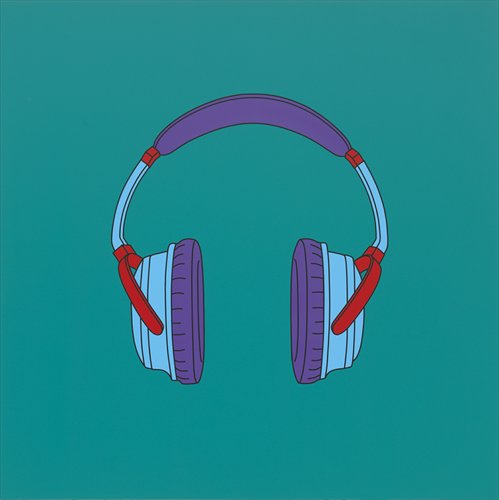Objects of art
The world of everyday things depicted by conceptual artist
There are things that are so common in our everyday lives that we seldom stop to consider them for any more than their utility, for example, soda cans, drying racks, light bulbs, pairs of headphones. Even when we do think about them, the likelihood is we focus on aspects such as quality, brand or manufacturer. But for Irish-born artist Michael Craig-Martin, their form is the paramount concern.

A portrait of Michael Craig-Martin Photos: Courtesy of the artist and Caroline True
Since the late 1970s, the artist, who graduated from Yale University and taught at Goldsmiths College, University of London for 20 years, has been painting everyday objects in a precise manner. Before that, he had been a prestigious conceptual artist known for a series of obscure art installations.
Among these was An Oak Tree, which consisted of a glass of water on a glass shelf, with text of a dialogue in which the artist asserts that the glass of water is no longer a glass of water but an oak tree.
Recently, Shanghai Himalayas Museum has been showcasing about 50 paintings by Craig-Martin for his first solo exhibition in China. The exhibition, supported by the Cultural and Education Section of the British Consulate-General, is the first event of the first-ever UK-China Year of Cultural Exchange in 2015.
All of the paintings on view were done in 2014, after the artist visited the venue at the end of 2013. Three major exhibition halls are decorated with his colorful but peaceful paintings, and a small room in between showcases texts, photographs and videos about his art career and methods.

All of the works are untitled, but have the painting subject's attached for clarification. Untitled (headphones medium, pictured above) features a turquoise background and simple but precise black lines to form the frame of the object, whose different parts are distinguished by different colors - purple for the headband and ear pads, red for the arms and blue for the sliders. Meanwhile, Untitled (iPhone) features the smartphone with a green body, black screen and small red side buttons, set against a large purple background.
"I dislike jargon intensely and cannot stand people who think that complex ideas need to be expressed in a way that is obscure or rarefied. I believe the opposite is the case," wrote the artist in his newly published catalog for the China exhibition. He is a great fan of Samuel Beckett, the Irish writer known for his precise and economic use of simple language.
"I think the things I'm dealing with in my work are complex because they are so basic, yet more complex than I can really grasp. I try to find the simplest way to express things, both visually and verbally. There are some things that you can say, and these should be said, and then other things that you can show but cannot say," Craig-Martin explained.
The 72-year-old Chinese artist Yu Youhan, who is known for his pioneering political pop art, visited the exhibition at its opening and said that he felt calm, peace and even bliss from the works. He said such feelings are rarely aroused by the current art scene which is full of what he called "ugly," "relentless" and "worrying" works.
Craig-Martin didn't arrive easily at the style for these pieces. The artist has said that when he started focusing on painting everyday objects, he was "frightened to use colors," and at the beginning he would only paint in black and white. This changed when he painted his exhibition space in strong colors in the 1990s. Since then he has "had the courage to use color."
He likes to use intense colors to cover a large area and catch the eye. He has a palette of 10 to 12 colors. In each piece, he usually uses no more than six or seven.
"Each color carries within it the capacity to reveal the full range of emotional, descriptive, psychological potential of all the others. For myself, in my own work, that meant trying to push every color in a room or every color in a painting simultaneously to its highest pitch," added the artist.
After Shanghai, the exhibition will tour to Hubei Museum of Art in Wuhan, Hubei Province, which is the hometown of the artist's Chinese great-grandmother.
Date: Until March 31, 10 am to 6 pm (closed Mondays)
Venue: Shanghai Himalayas Museum
上海喜马拉雅美术馆
Address: 869 Yinghua Road 樱花路869号
Admission: 40 yuan ($6.40)
Call 5033-9801 for details